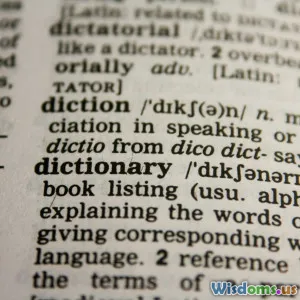
Why Do Some Countries Change Their Official Languages Over Time
13 min read Explores reasons and impacts behind official language changes in different countries throughout history. (0 Reviews)
Why Do Some Countries Change Their Official Languages Over Time?
When we picture a nation, we often link it to a specific language—Spanish in Spain, Thai in Thailand, or Finnish in Finland. But languages, just like borders and governments, can change. Throughout modern history, many countries have shifted their official tongues—not simply due to linguistic evolution, but often as a result of conscious choices by their leadership or people. What motivates these dramatic pivots, and what can we learn from the ripple effects of such policies? The answer tells a story of identity, power, and resilience.
Historical Forces that Drive Language Changes

Language policies don’t exist in a vacuum. Political upheaval and historical events dramatically shape the languages we recognize as official within a country.
Colonialism’s Lingering Linguistic Footprints:
Colonial powers often imposed their languages on the lands they controlled. For instance, English, French, Portuguese, and Spanish became official or dominant tongues in diverse worlds—from West Africa to Southeast Asia and the Americas—entrenched through administration, schooling, and commerce. In many former colonies, independence movements re-examined language policies.
Example: India, upon gaining independence in 1947, inherited English as a key administrative and educational language. However, driven by nationalist sentiment, India also promoted Hindi—declaring it an official language in the Constitution of 1950. Yet, owing to the complexity of its linguistic tapestry, English retained a co-official role, highlighting both the enduring impact of former colonial rule and the practical realities of multicultural governance.
Nation-Building & Identity:
Emerging nations wishing to assert distinct identities sometimes shed foreign or imposed languages to revive indigenous ones. Consider Tanzania under Julius Nyerere in the 1960s: While many Tanzanians spoke regional tongues, Nyerere instituted Swahili as a unifying official language to foster post-colonial identity and social cohesion, distancing the country from English's colonial legacy.
Revolution and Regime Change:
Dramatic political shifts can also prompt a language change. In post-Soviet states like Ukraine and the Baltic countries, breaking away from the Soviet Union meant not only political but also linguistic reorientation. Latvian swiftly reclaimed its official status post-1991 independence, in part to revive suppressed national culture and distinguish itself from decades of Russification.
Sociopolitical Motivations Behind Language Shifts

Behind every official language policy lies a web of sociopolitical motivations, stretching from national unity to geopolitics and compromise.
Unifying a Fractured Nation:
In countries with a mosaic of languages and dialects, leadership may promote a single tongue to bridge social or ethnic divides. Indonesia, archipelagic and extraordinarily diverse, adopted Bahasa Indonesia—a modified Malay variety with few native speakers, but easily learned as a second language—upon independence. The idea: avoid the risk of favoring dominant native tongues, such as Javanese, and instead build an inclusive national identity.
Minority Inclusion or Exclusion:
Language policy can just as easily exclude marginalized populations. After the breakup of Yugoslavia, Bosnia and Herzegovina, Croatia, and Serbia recognized their closely related languages (Bosnian, Croatian, Serbian) as official in distinct ways—reflecting not only linguistic preferences, but the forging of new post-war national identities. However, minority groups sometimes struggle for recognition: the Roma in central Europe and Turkish speakers in Cyprus, for example, have fought long battles for language rights.
Case in point: South Africa, in a remarkable contrast, chose reconciliation and pluralism by recognizing 11 official languages post-apartheid, signaling respect for its multicultural heritage and aiming to undo generations of linguistic discrimination.
Political Signaling and International Relations:
Sometimes a language change serves as a diplomatic tool. For example, Rwanda switched its official language of education from French to English in 2008, seeking closer economic and political ties to the East African Community and British Commonwealth, and as a pivot away from the legacy of French-backed elites implicated in pre-genocide politics.
The Challenge of Balancing Linguistic Heritage

Balancing the nostalgia and pride of traditional tongues with practical and diplomatic considerations remains one of the thorniest aspects of language policy.
Tradition Versus Modernity:
For some countries, reinstating a historical language is a path to reclaiming cultural pride. Ireland’s decades-long attempts to revive Irish (Gaelic) as a vibrant official language—through education, media, and public policy—reflect ongoing efforts to resist linguistic erosion in the face of English dominance. Yet, practical adoption often lags, showing how difficult it is to revive a language once linguistic momentum swings another way.
The Risk of Linguistic Extinction:
Choosing to prioritize one official language often places minority languages at risk. Countless indigenous languages in the Americas, Australia, and Africa have vanished or are endangered as governments push for official languages associated with power or economic opportunity. The case of Quechua in Peru—given official status in 1975, then backpedaled to favor Spanish—highlights this back-and-forth struggle.
Education and Media as Double-Edged Swords:
A country's schooling and media systems can propel the spread of the chosen official language, often at the expense of local dialects. Tunisia, for instance, experienced a marked Arabization post-independence, gradually replacing French in education and administration. However, many urban elites maintain fluency in French for global engagement and commerce.
Economic, Educational, and Technological Factors

The choice of an official language isn't always just about national identity. Economic considerations, educational goals, and technological progress profoundly influence which language rises to the top.
Attracting Global Business:
English, as the language of international business, technology, and science, exerts irresistible pressure. In countries like Rwanda, switches from French to English were partly motivated by the need to participate in the East African Common Market and pursue partnerships with English-speaking investors.
Standardizing Education for Development:
Changing the official language is often seen as a way to equalize education and boost literacy. In Kazakhstan, for example, the adoption of the Latin alphabet (from Cyrillic) for the Kazakh language aims to integrate the country more closely with global networks and modernize its educational platforms.
Digital and Connectivity Imperatives:
Technology further complicates language policies. Nations striving for digital transformation may need to align with languages dominating the internet. English and Chinese, for instance, overshadow other languages online—driving younger populations worldwide either to champion or challenge official norms in favor of digital communication realities.
Navigating the Complexities: What Can We Learn?

For nations considering a language policy shift, the road is fraught with both opportunity and risk. What insights emerge from past and present debates?
Balancing Pragmatism with Inclusivity:
Official languages should not only reflect historical or cultural aspirations, but also practical communication needs and the realities of community life. The most successful policies balance the symbolic weight of language with socioeconomic and diplomatic calculations—for example, Singapore’s policy of recognizing four official languages (English, Mandarin, Malay, Tamil), each serving distinct functions in public life.
Avoiding Policy Pitfalls:
Imposing a language from the top down—without public buy-in—usually leads to friction. Sri Lanka's official policies privileging Sinhalese after independence inflamed divisions with Tamil minorities, ultimately contributing to decades of conflict. Genuine dialogue with stakeholders and phased or plural policy approaches tend to enjoy greater legitimacy and success.
The Value of Multilingualism:
Language shifts do not necessarily mean erasing older tongues. Canada’s embrace of both English and French as official languages, coupled with the promotion of Indigenous language revitalization, serves as a model for pluralism in an era increasingly aware of cultural rights and diversity.
The Human Impact of Language Policy

Shifts in official language policy reach far into the texture of daily life, affecting opportunities, identities, and feelings of belonging.
A Personal Matter:
When Bolivia adopted thirty-seven official languages in its 2009 constitution to recognize indigenous heritage, it offered sections of the population new pride and legitimacy—as well as daunting challenges for administrative implementation. Individual and community stories reveal both empowerment and frustration when navigating new linguistic landscapes, with success hinging on investment in teacher training, resource development, and local advocacy.
Intergenerational Transmission:
Children growing up in eras of policy change often become de facto translators between older, monolingual relatives and a shifting society. While official language adoption can open doors to wider worlds, it can also inadvertently erode oral traditions, folk knowledge, and unique worldviews encoded in threatened tongues.
A Global Reality:
Global interconnectedness intensifies these challenges and opportunities. Diaspora populations, migrants, and international students routinely build lives across linguistic mosaics. Countries able to equip citizens with robust multilingual skills—without sacrificing cultural roots—stand to gain in both economic agility and social harmony.
Smooth, steady shifts in official language policy can help nations write new stories for themselves while honoring what came before. But such changes are never just about words: they reflect and shape the very essence of who a people are, both to themselves and to the world.
Rate the Post
User Reviews
Other posts in Sociolinguistics
Popular Posts


















